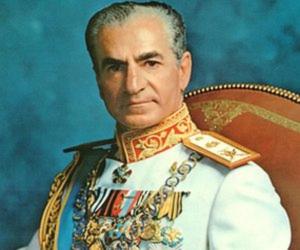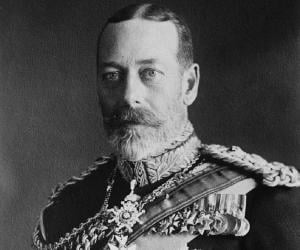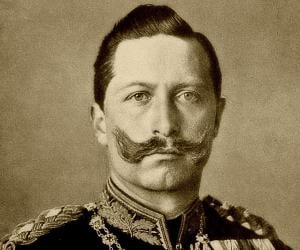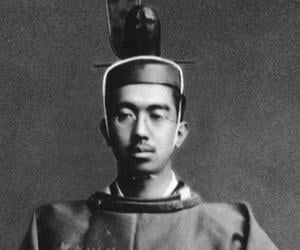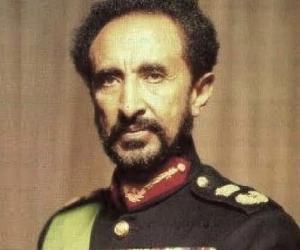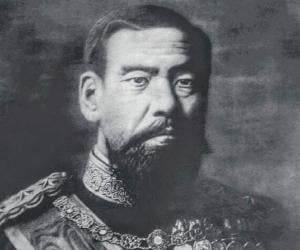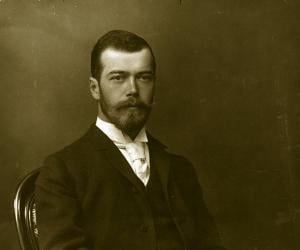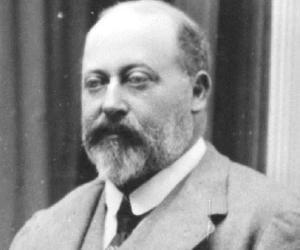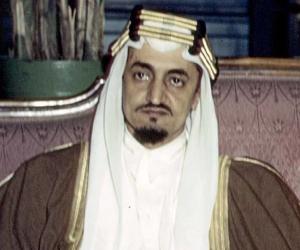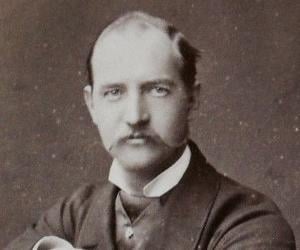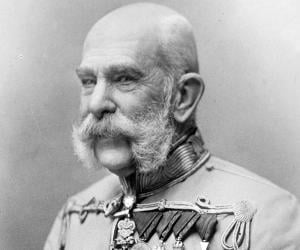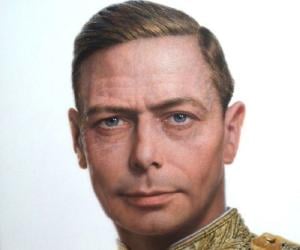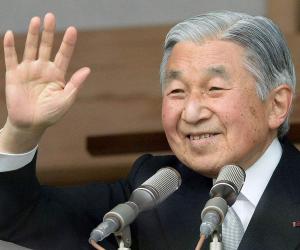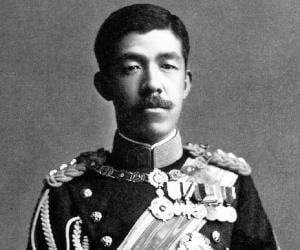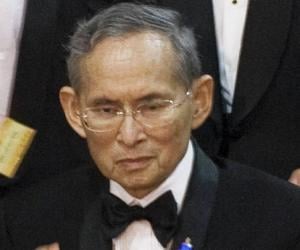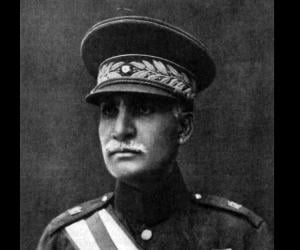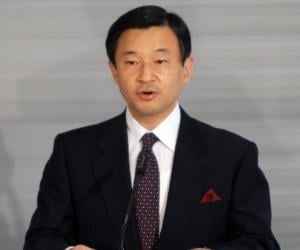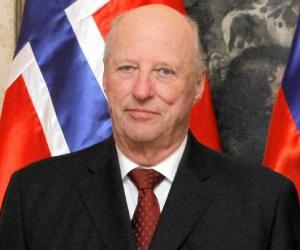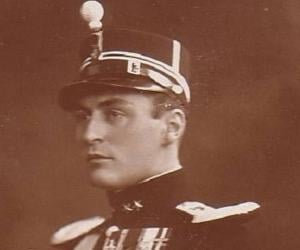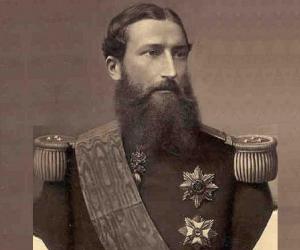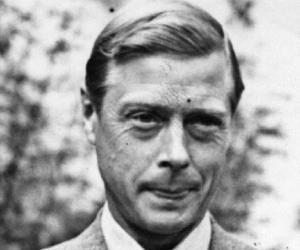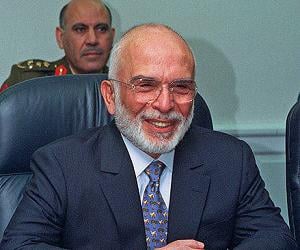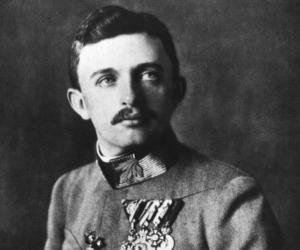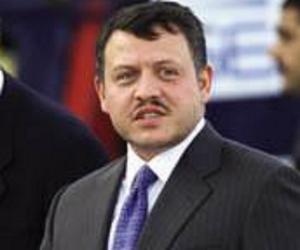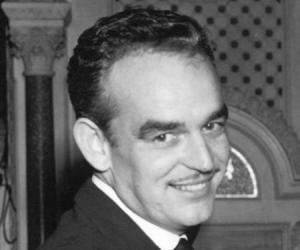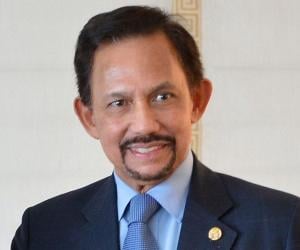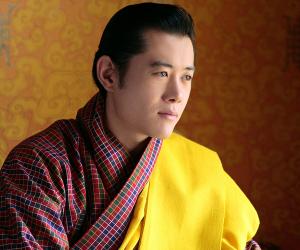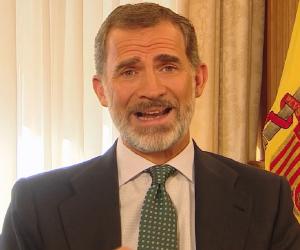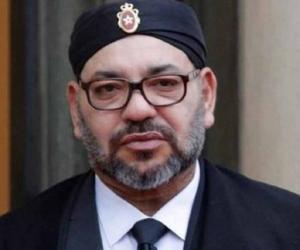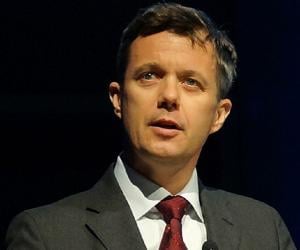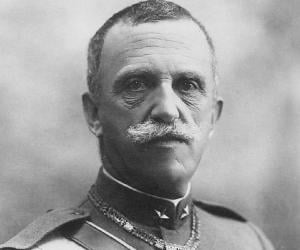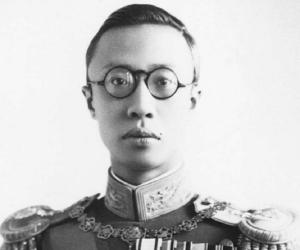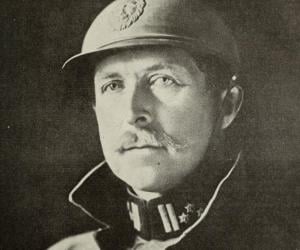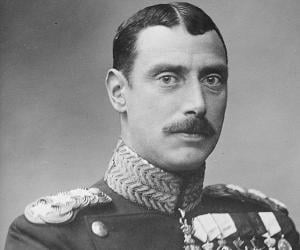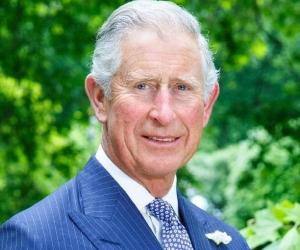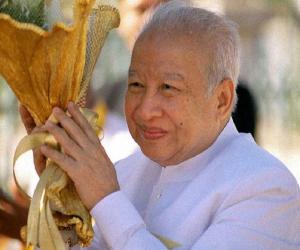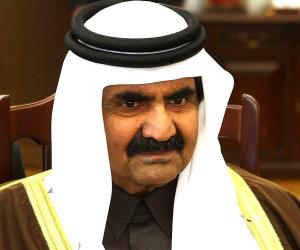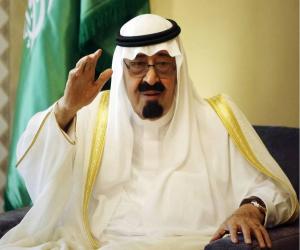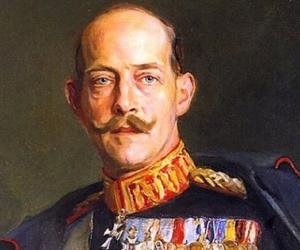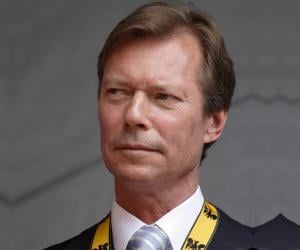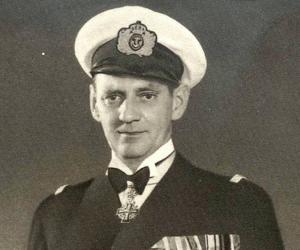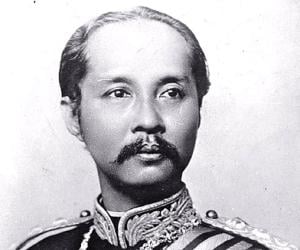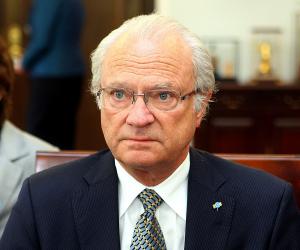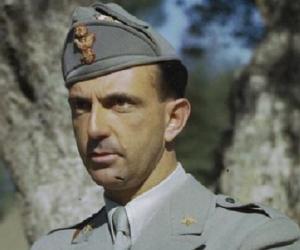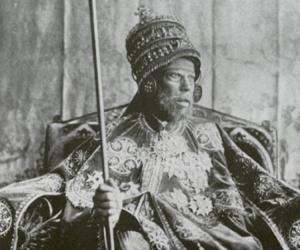Mohammad Reza Pahlavi served as the last king of Iran from 1941 to 1979. During his reign, Iran witnessed rapid military and industrial modernization and several social and economic reforms. During his rule, Iran also enjoyed a spike in economic growth, surpassing France, England, and the US. However, the Iranian Revolution, which was unusual in many ways, overthrew the king.
George V became the King of Great Britain and the British Dominions in 1910. During the World War I, he played an active role in supporting the troops. The rise of socialism, communism, fascism and the Indian independence movement was witnessed during his rule. His reign also saw the supremacy of the elected British House of Commons established by the Parliament.
Wilhelm II reigned as the King of Prussia and German emperor from 1888 to 1918. He is credited with promoting scientific innovation and building a blue-water navy, which strengthened Germany’s position as a great power. However, he was also responsible for getting his country involved in World War I, which eventually brought an end to the Hohenzollern dynasty’s rule.
Haile Selassie, served his country, Ethiopia, as its regent from 1916 to 1930 and as its emperor from 1930 to 1974. He introduced the first Ethiopian constitution, abolished slavery, chaired the Organisation of African Unity, and helped Ethiopia enter the UN. He inspired the Rastafari movement, too.
Emperor Meiji of Japan presided over the all-round revolutionary transformation of his empire which emerged as a strong force on the global scene during his reign. His policies and actions led to Japan’s rapid growth and ended its isolation from the rest of the world. One of the noted changes during rule was the abolition of special privileges of samurais.
Nicholas II reigned as the last Emperor of All Russia from 1894 until his abdication in 1917. His reign oversaw a series of reforms in Russia. These reforms included the introduction of literacy programs, civil liberties, and methods to modernize the empire's infrastructure. However, these reforms were eventually undermined by Nicholas' love for autocratic rule.
Edward VII, the King of the United Kingdom of Great Britain and Ireland and Emperor of India from 22 January 1901 until his death, is said to have played a role in the reorganisation of the British Army after the Second Boer War. His main interests lay in the fields of foreign affairs and naval and military matters.
Faisal of Saudi Arabia was King of Saudi Arabia from 1964 to 1975. He was the son of King Abdulaziz and his wife, Tarfa. During his father’s reign, he was given numerous responsibilities of political significance. After coming to power, he implemented a series of modern reforms and issued a decree for the total abolition of slavery.
George I of Greece reigned as the king of Greece from 1863 until his murder in 1913. During his reign of nearly 50 years, which is the longest in the history of modern Greece, George helped expand Greece's territory significantly. During his reign, Greece also became increasingly prosperous and attained a popular place on the European stage.
Franz Joseph I of Austria reigned as the Emperor of Austria from 1848 until his death in 1916. He also served as the King of Hungary, Bohemia, and Croatia and monarch of other states of Austria-Hungary. During his reign, Austria-Hungary decided to wage war against the Kingdom of Serbia, which eventually resulted in the First World War.
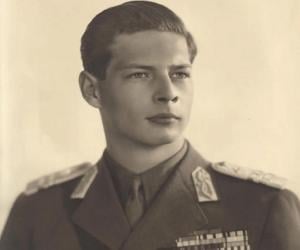
Michael I, the last King of Romania, ruled the country twice, of which the first-tenure was as a minor. During his second tenure, he removed Ion Antonescu’s government that aligned Romania with Nazi Germany. He declared alliance with Allies but was eventually forced to abdicate by Petru Groza’s government on December 30, 1947, as Romania officially became a People's Republic.
Akihito served as the 125th emperor of Japan after succeeding his father to the Chrysanthemum Throne. As emperor, he played a crucial role in inspiring people in 2011 when Japan was struck by two major disasters: Fukushima I nuclear crisis and Great East Japan Earthquake. Akihito abdicated the throne in 2019, becoming the first emperor to do so since 1817.
Emperor Taishō was the 123rd Emperor of Japan. He was the son of Emperor Meiji and Yanagihara Naruko, a concubine. As the eldest living son of the emperor, he was formally named the crown prince in 1888. Upon the death of his father in 1912, he ascended the throne. A sickly man with disabilities, he died at 47.
Bhumibol Adulyadej of the Chakri dynasty reigned as the ninth monarch of Thailand. Reigning from 1946 until his death in 2016, Adulyadej is the second-longest reigning monarch in the history. During his reign, Bhumibol Adulyadej retained enormous constitutional powers and was extremely popular among his subjects, with some even seeing him as close to divine.
Rezā Shāh was a military colonel who founded the Pahlavi dynasty and reigned as the Shah of Iran from December 1925 to September 1941. He was also the prime minister of Iran from October 1923 to November 1925. His tenure saw the introduction of many social, economic, and political reforms, and he is regarded as the founder of modern Iran.
Naruhito, the 126th emperor of Japan and the only living monarch to use the title “Emperor,” ascended the throne after his father Akihito’s abdication in 2019. Devoted to efforts of water conservation, Naruhito has also been part of the International Olympic Committee. He plays both the violin and the viola.
Harald V of Norway ascended the throne after the demise of his father, King Olav V. A sports enthusiast, he represented Norway in sailing at three Olympic Games. He also became a patron of World Sailing. The King is an admiral, the Supreme Commander of the Norwegian Armed Forces and a four-star general.
Olav V of Norway served as the king of Norway from 1957 to 1991. Olav became heir apparent to the throne in 1905 when his father was crowned king of Norway. His leadership skills during World War II earned him the position of Norwegian Chief of Defence in 1944. Nicknamed The People's King, Olav was popular for his down-to-earth style.
Leopold II of Belgium reigned over Belgium as its second king from 1865 to 1909. He also owned the Independent State of the Congo from 1885 to 1908. Congolese people were subjected to torture and murder under Leopold's administration; the term crimes against humanity was coined by George Washington Williams in 1890 to describe the atrocities of Leopold's administration.
Edward VIII was King of the United Kingdom and the Dominions of the British Empire for several months in 1936. He was also Emperor of India during this period. He served in the British Army during the First World War and became the king following his father’s death. However, he abdicated the throne only months into his reign.
King Hussein of Jordan reigned as the king of Jordan from 1952 to 1999. As a royal member of the House of Hashim, Hussein was a direct descendant of Prophet Muhammad. At the time of Hussein's accession, Jordan was a young nation with few natural resources. However, by the end of his reign, Jordan had become a stable, modern state.
Charles I of Austria reigned from 1916 to 1918 as the last emperor of Austria. He was the last king of Croatia, Bohemia, Hungary, and the last monarch from the House of Habsburg-Lorraine. Charles is remembered for making unsuccessful attempts to end Austria-Hungary's World War I campaign. He also tried to save the Austro-Hungarian Empire from disintegration but was unsuccessful.
The King of Jordan since 7 February 1999, Abdullah II of Jordan is a member of the Hashemite dynasty. He is a 41st-generation direct descendant of Muhammad and the son of King Hussein of Jordan and his second wife, Princess Muna. Upon assuming the throne, he liberalized the economy and implemented numerous reforms. He is a popular monarch.
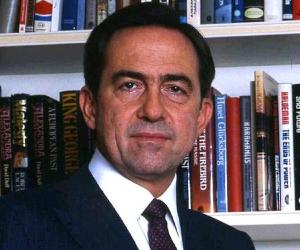
Constantine II of Greece reigned as the King of the Hellenes from 1964 until 1973 when the Greek monarchy was abolished. His reign culminated in the Greek junta and the former King of Greece was forced into exile when the countercoup against the junta failed. Constantine is also a former sailor who won an Olympic gold in the 1960 Olympics.
Jigme Khesar Namgyel Wangchuck is Druk Gyalpo or "Dragon King" of the Kingdom of Bhutan. He is the son of Jigme Singye Wangchuck, who abdicated the throne in his favor in 2006. As the king, he began overseeing the democratization of Bhutan and has implemented several reforms to improve the standard of living in his country.
Felipe VI of Spain is the current King of Spain, reigning since 2014. He ascended the throne upon the abdication of his father, Juan Carlos I. His mother is Queen Sofía. As the king, he is head of state and commander-in-chief of the Spanish Armed Forces as well. He also serves as the honorary president of several associations and foundations.
Mohammed VI of Morocco is the present King of Morocco. He ascended to the throne in 1999. His father was King Hassan II. Hailing from the Alaouite dynasty, Mohammed VI well-educated man with a Ph.D. in law with distinction. It is alleged that corruption is rampant in his court, and he is criticized for his extravagant lifestyle.
Frederik, Crown Prince of Denmark is the first in order of succession to the Danish throne. Frederik has various interests that range from climate change to sports. He often encourages the people of Denmark to stay active and healthy. He has also established the Crown Prince Frederik's Foundation, which aims to provide financial support to students and encourage scientific expeditions.
Puyi served as the final emperor of China's last imperial dynasty, The Qing dynasty. After Manchuria was invaded by Japan, Puyi became a puppet at the hands of the Japanese and was chosen as the emperor of the puppet state of Manchukuo. He then signed many edicts, given to him by the Japanese, including the one that made slavery legal.
Albert I of Belgium ruled as King of the Belgians for over 25 years from 1909 to 1934. He played a crucial role during World War I, for which he is often referred to as the Soldier King or Knight King in Belgium. A renowned alpinist, Albert died in a mountaineering accident and his death was mourned around the world.
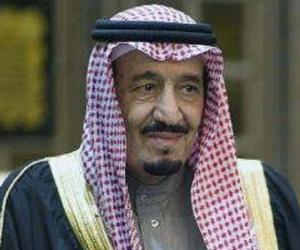
Salman bin Abdulaziz Al Saud has been reigning as the King of Saudi Arabia since 23 January 2015. An important political figure, Salman also served as the Minister of Defense from 5 November 2011 to 23 January 2015. Salman also served as the Governor of Riyadh Province on two occasions; from 1956 to 1960 and again from 1963 to 2011.
King Charles III is King of the United Kingdom and 14 other Commonwealth realms. He acceded to the throne after the death of his mother, Queen Elizabeth II. Charles III is the oldest person ever to assume the British throne. He was the oldest and the longest-serving heir apparent in British history and the longest-serving Prince of Wales.
Born into the royal family of Qatar, Hamad bin Khalifa Al Thani was educated at the Royal Military Academy at Sandhurst. He served in the Qatar army and reigned as the Emir of Qatar. His reign witnessed women vote and run for office for the first time in the country.
Frederick IX of Denmark reigned as the king of Denmark from 1947 until his death in 1972. Under his reign, the Danish society experienced a rapid change; the economy received a massive boost in the 1960s which allowed women to enter the labor market. In 1982, Frederick's statue was unveiled in Copenhagen, ten years after his death.
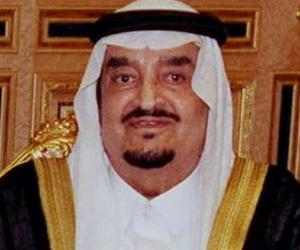
Fahd of Saudi Arabia, the eighth son of Saudi king Abdulaziz, started his career as a politician and served as the minister of education and the minister of interior of Saudi Arabia. He then reigned as the king and prime minister of Saudi Arabia for more than 2 decades, becoming the longest-reigning Saudi king.
Chulalongkorn reigned as the king of Siam from 1868 until his death in 1910. Nicknamed the Royal Buddha, Chulalongkorn's reign witnessed the modernization of Siam; several social and governmental reforms marked his reign. Since the reforms ensured Siam's survival despite Western colonialism, Chulalongkorn earned the title, the Great Beloved King.
Carl XVI Gustaf of Sweden has been serving as the king of Sweden since the demise of his grandfather King Gustaf VI Adolf in 1973. He is currently the longest-reigning monarch in the history of Sweden. Apart from being passionate about the environment, agriculture, technology, and trade, the king is also fond of automobiles and owns many Porsche 911s.
Umberto II, the only son of King Victor Emmanuel III, was the last king of Italy and ruled for just 34 days, from May 9 to June 12, 1946, and then went into exile. Also known as Re di Maggio, he was the de facto head of state since 1944.
Menelik II reigned as the emperor of Ethiopia from 1889 to 1913 after ruling as the king of Shewa from 1866 to 1889. He is credited with transforming the Ethiopian Empire by expanding his kingdom into Wolayta, Sidama, and Kaffa kingdoms. Fascinated by modernity, Menelik II played a major role in modernizing Ethiopia.
